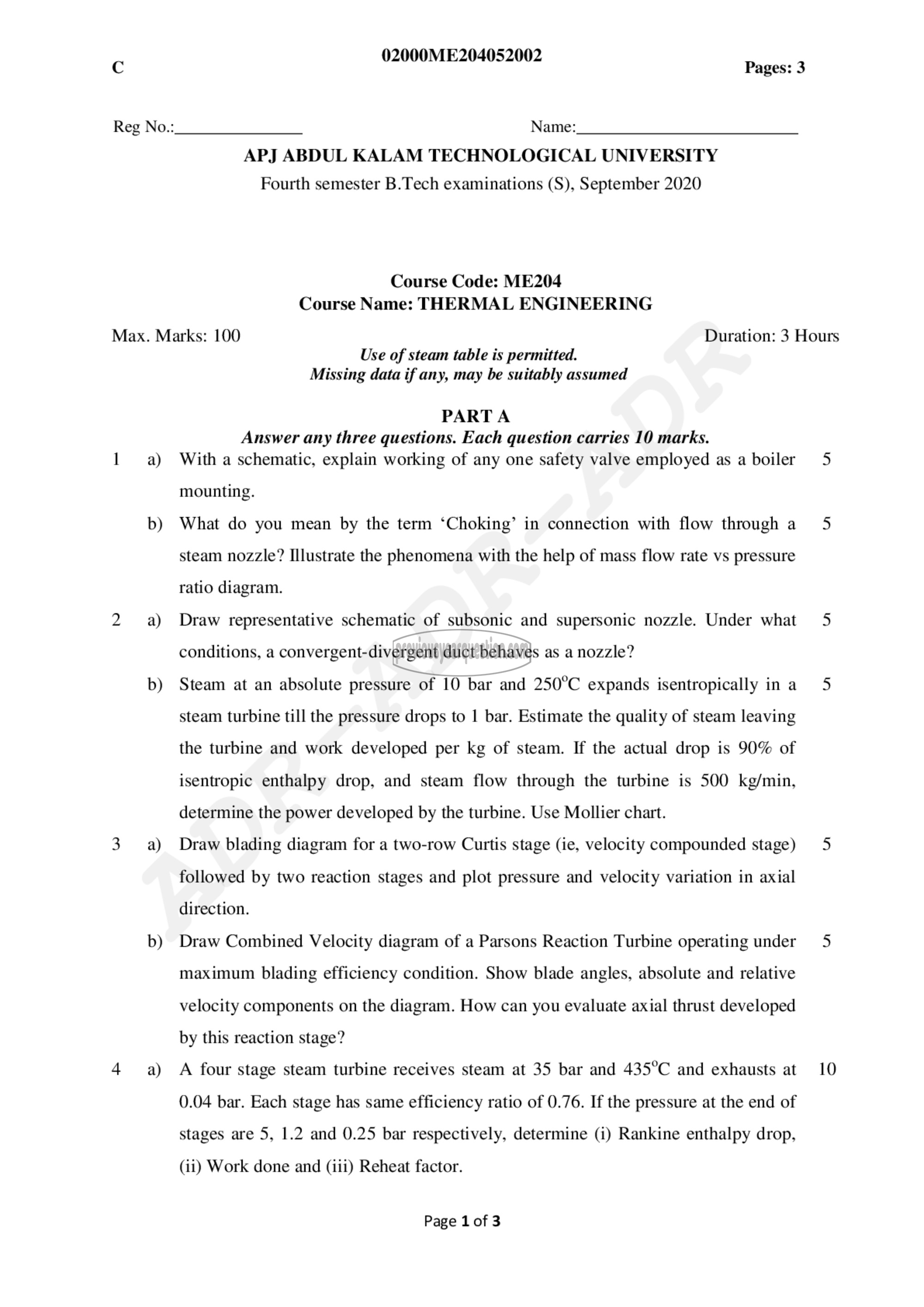APJ ABDUL KALAM TECHNOLOGICAL UNIVERSITY Previous Years Question Paper & Answer
Semester : SEMESTER 4
Subject : Thermal Engineering
Year : 2020
Term : SEPTEMBER
Branch : MECHANICAL ENGINEERING
Scheme : 2015 Full Time
Course Code : ME 204
Page:1
( 02000ME204052002 Pages: 3
Reg No.: Name:
APJ ABDUL KALAM TECHNOLOGICAL UNIVERSITY
Fourth semester B.Tech examinations (S), September 2020
Course Code: ME204
Course Name: THERMAL ENGINEERING
Max. Marks: 100 Duration: 3 Hours
Use of steam table is permitted.
Missing data if any, may be suitably assumed
PARTA
Answer any three questions. Each question carries 10 marks.
1 a) With a schematic, explain working of any one safety valve employed as a boiler 5
mounting.
b) What do you mean by the term ‘Choking’ in connection with flow through a 5
steam nozzle? Illustrate the phenomena with the help of mass flow rate vs pressure
ratio diagram.
2 a) Draw representative schematic of subsonic and supersonic nozzle. Under what 5
conditions, a convergent-divergent duct behaves as a nozzle?
b) Steam at an absolute pressure of 10 bar and 250°C expands isentropically ina 5
steam turbine till the pressure drops to | bar. Estimate the quality of steam leaving
the turbine and work developed per kg of steam. If the actual drop is 90% of
isentropic enthalpy drop, and steam flow through the turbine is 500 kg/min,
determine the power developed by the turbine. Use Mollier chart.
3 ஐ _ Draw blading diagram for a two-row Curtis stage (ie, velocity compounded stage) 5
followed by two reaction stages and plot pressure and velocity variation in axial
direction.
b) Draw Combined Velocity diagram of a Parsons Reaction Turbine operating under 5
maximum blading efficiency condition. Show blade angles, absolute and relative
velocity components on the diagram. How can you evaluate axial thrust developed
by this reaction stage?
4 a) A four stage steam turbine receives steam at 35 bar and 435°C and exhausts at 10
0.04 bar. Each stage has same efficiency ratio of 0.76. If the pressure at the end of
stages are 5, 1.2 and 0.25 bar respectively, determine (i) Rankine enthalpy drop,
(ii) Work done and (iii) Reheat factor.
Page 1 of 3
